Norse mythology is full of supernatural beings. There are elves, dwarves, giants, and gods. Traditionally, myths and legends were relayed through oral tradition. Such myths were first recorded in the 13th-century Poetic Edda and translated into prose by Snorri Sturluson in his Prose Edda. Since written records were sometime after the Christianization of Scandinavia and the European north, material from the 10th century onwards is not always true to the original myths.
In Old Norse mythology, also known as Germanic mythology, there existed both major and minor gods. While the likes of Marvel and other comic books have popularized names like Thor, Loki, Odin, and Hela, there are plenty of other Norse deities to go around.
Table of Contents
How Many Norse Gods are There?
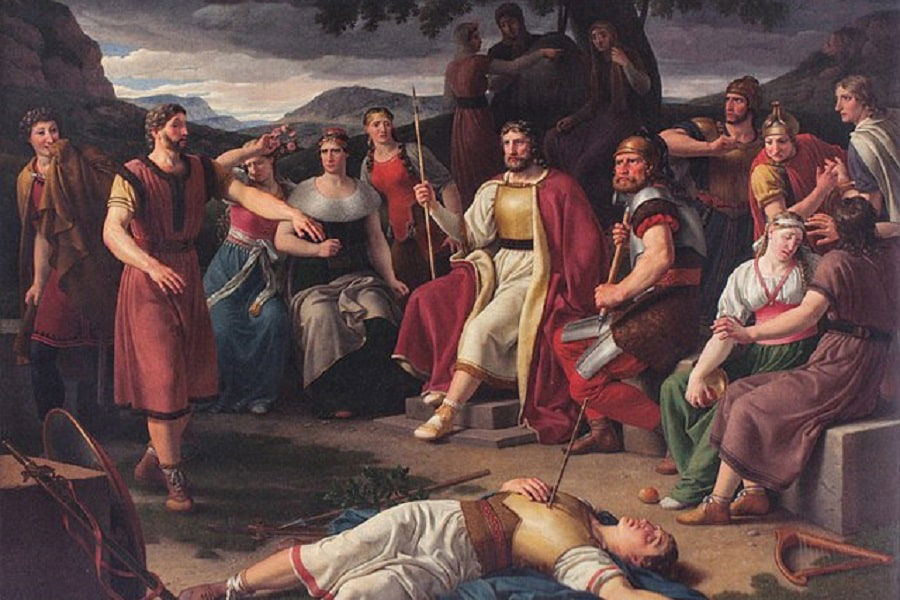
The exact number of Norse gods and goddesses is up for debate. Different regions would have valued different deities and entities. Further difficulties crop up when it comes out that beings assumed to be gods – like Loki – don’t have any surviving archaeological evidence suggesting worship. Their prevalence in myth and relation with other gods is generally where the assumption of them being gods comes up.
Snorri Sturluson mentions there being 12 Aesir gods (male gods) and 12 Asynjur (female goddesses) in his Prose Edda. Doing some basic math means we should end up with 24 gods and goddesses in all. Only, Sturluson actually lists 14 Aesir and eventually changes the number of Asynjur from 14, to 16, and later on to 28.
Amongst Germanic tribes during the Viking Age, there were at least 66 individual gods and goddesses. The most important gods were the ones that stood the test of time, and whose names are still relevant today.
A Time Before the Norse Gods
Believe it or not, there was a time before the Norse gods. The history behind how the gods came to power is…well, messy, but fascinating.
A long, long time ago – we’re talking way back – there was the primeval rule of the jotunn. Or, the giants. Only three realms existed: Ginnungagap (a bottomless abyss), Muspelheim (there’s lava everywhere), and Niflheim (thick fog and even thicker ice).
The first being to be created was a jotunn by the name of Ymir. This great-granddaddy of giants was made after the biting ice of Niflheim came in contact with the immense heat of Muspelheim.
As the story goes, Ymir was the big cheese until three young Aesir, Odin, Vili, and Ve, killed him. The Aesir weren’t jotunn. They came from a guy that was formed from a cow licking some salty stones. Therefore, the murder immediately made the Aesir ancient enemies of the jotunn.
With Ymir’s brutal, dismembering death came the age of the Norse gods as we know them today. They even created Midgard from his eyebrows!
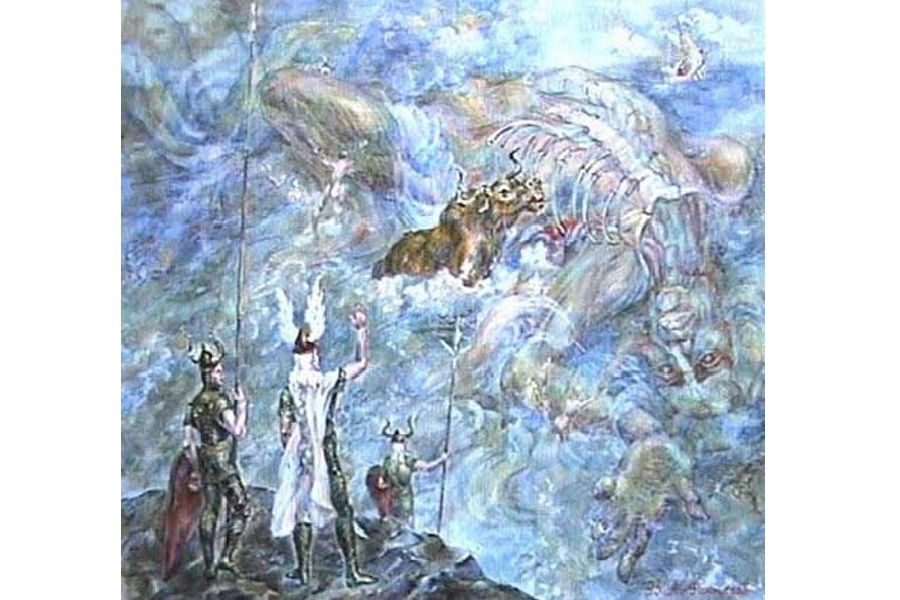
The Divided Norse Pantheon Divided
The gods and goddesses of the Old Norse religion were classified separately. These two pantheons – also referred to as clans or tribes – warred for years. Known in history as the Aesir-Vanir War, the conflict only ended when the two tribes merged into one.
READ MORE: Ancient War Gods and Goddesses: 8 Gods of War from Around the World
What makes the Aesir and Vanir unique is that they are not of opposing generations. Whereas the Greek gods and goddesses had to wage war against the previous generation of Titans, the Aesir and Vanir did no such thing. They were equals.
The Aesir
Aesir was characterized by their chaotic, combative tendencies. With them, everything was a battle. They were notable for their use of brute force.
Their home was in Asgard and the residents were considered to be the main gods of Norse mythology. Asgard was one of the worlds around Yggdrasil, ladened with gold and splendor. Snorri Sturluson compares Asgard to the city of Troy before the Trojan War. With this comparison, Sturluson further suggests that Trojan survivors had fled to northern Europe, bringing with them technological advancements.
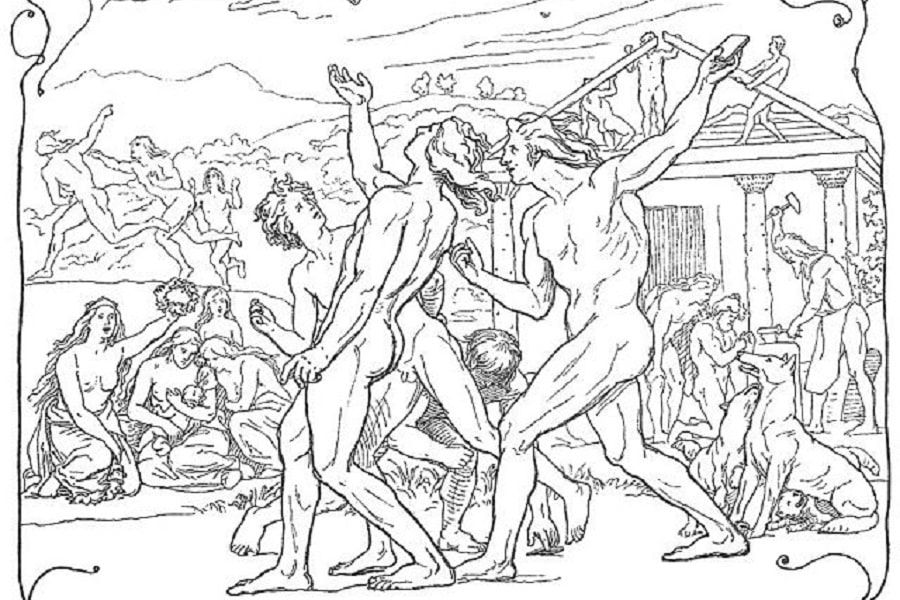
Significant Aesir gods include:
The Vanir
The Vanir were a tribe of supernatural people hailing from the realm of Vanaheim. They were unlike the Aesir, being practitioners of magic and having an innate connection to the natural world.
Vanaheim was one of the nine worlds that surrounded the world tree, Yggdrasil. There is no explicit record indicating where Vanaheim would be located, though it was believed to be a reflection of Asgard. The English folklorist Hilda Roderick Ellis Davidson theorizes that Vanaheim was in, or closely situated near, the underworld of Niflheim.
The most important figures of the Vanir are as follows:
*Nerthus may have been Njord’s sister-wife and the mother of Freyja and Freyr
54 Norse Gods and Goddesses
The gods and goddesses of Norse mythology weren’t immortal, deathless beings. They could die. And, a number of them did. The Norse deities could even age if it weren’t for some enchanted fruit.
Below is a collection of the most important of the Norse gods, whose presence was revered in those early Germanic tribes throughout northern Europe. While some of these names will seem familiar (special shoutout to Marvel Comics) others may be a bit surprising.
Odin
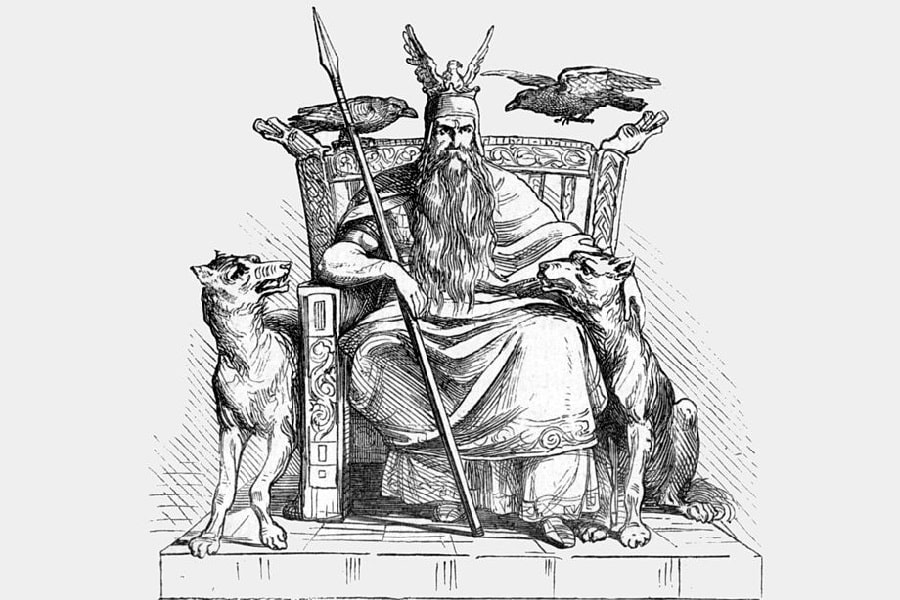
Realms: Kingship, wisdom, knowledge, victory, frenzy, and the runic alphabet
Family Ties: Husband of Frigg, father of several Aesir gods
Fun Fact: The English word “Wednesday” has roots in the Norse “Woden’s Day”
Odin is the supreme god of Norse mythology. He had a chariot pulled by the eight-legged Sleipnir, which was gifted to him by Loki. He was originally a god of war, though elevated to a god of kingship and wisdom later on. Also, we can thank Odin for creating the runic alphabet.
There are tons of titles that Odin holds, though his most famous one is “All-Father.” That particular title denotes Odin as the ruler of the gods, his most burdensome role to date. Perhaps that is why Norse nobles venerated him: not only was he the guardian of kings, but he was one himself.
Frigg
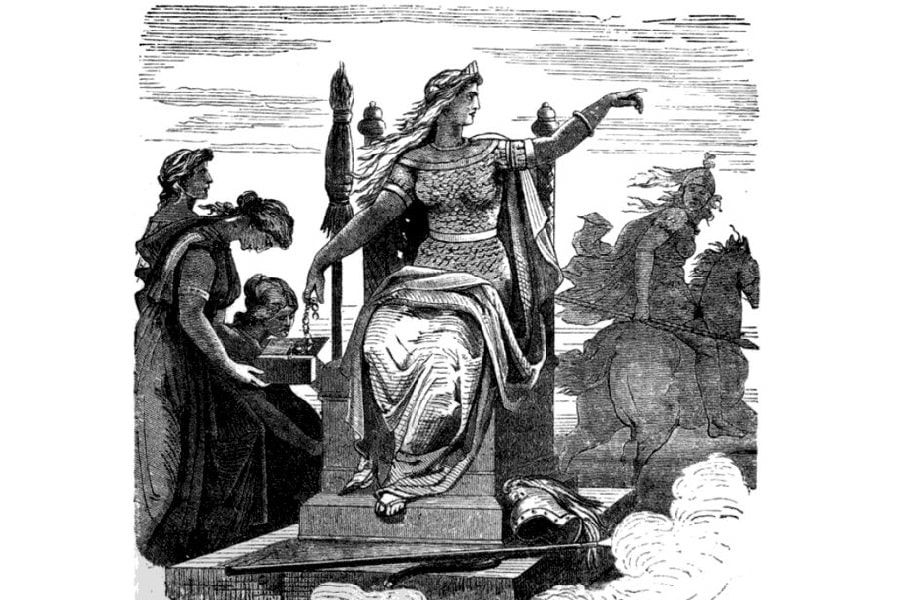
Realms: Marriage, motherhood, fertility
Family Ties: Wife of Odin and mother of Baldr
Fun Fact: The weekday “Friday” comes from “Frigg’s Day”
Frigg is Odin’s wife and Baldr’s mother. She is all about femininity, motherhood, and fertility. All surviving accounts of Frigg describe her as being devoted – to her son, at least.
Additionally, despite being an apparent goddess of marriage, Frigg wasn’t always loyal to her spouse. And, to be fair, Odin wasn’t necessarily loyal either. What they had worked for them, and that’s what matters.
Baldr
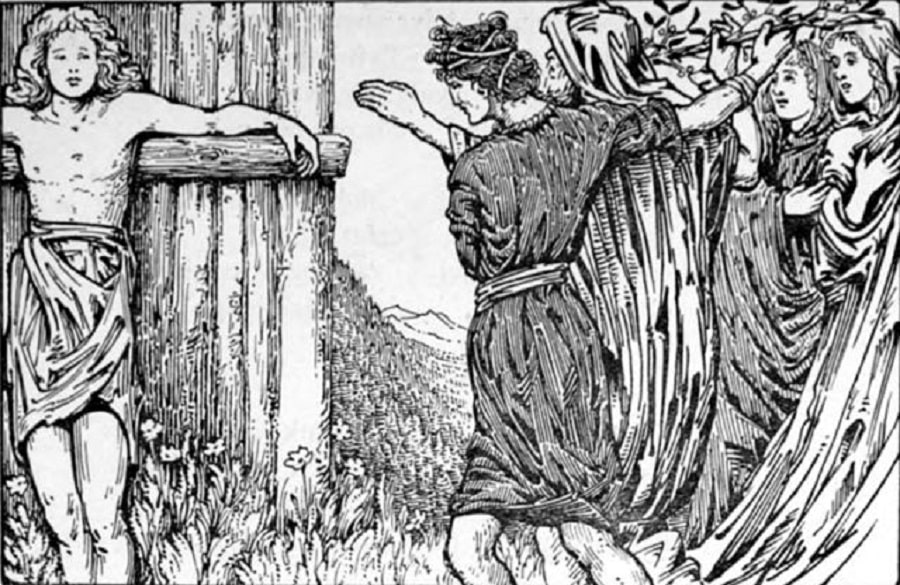
Realms: Beauty, peace, light
Family Ties: Son of Odin and Frigg
Fun Fact: The name Baldr means “hero-prince”
So Baldr just may be one of the most famous of the Norse gods. He was surely the most beloved. Baldr had it all: looks, charm, and invulnerability. Well, near invulnerability.
As his mother’s favorite, Frigg went on a quest to have everyone vow to never harm Baldr. Much like Thetis with Achilles, we know how well that goes.
Nanna

Realms: Motherhood, devotion, and joy
Family Ties: Wife of Baldr
Fun Fact: Nanna sent gifts to other gods from Helheim after her death
Nanna is a symbol of devotion and the goddess of motherhood in Old Norse religion. She is the wife of the doomed god Baldr, following him to the grave. At least she could then join her husband in Helheim.
There are not many myths where Nanna is mentioned, unlike other Norse goddesses on the list. Her role is minimal, as she was the counterpart of Baldr who dies early in popular myths.
Forseti
Realms: Justice, mediation, and reconciliation
Family Ties: Son of Baldr and Nanna
Fun Fact: Forseti wielded a golden ax
Forseti is the god of mediation in the Norse pantheon. He is the judge that will right wrongs and makes sure everything turns out alright in the end. No one was said to leave his court dissatisfied.
Thor

Realms: Lightning, sacred ground, guarding mankind, and storms
Family Ties: Son of Odin and husband of Sif
Fun Fact: The English “Thursday” descends from the Norse “Thor’s Day”
During the Viking Age, Thor was the guy to worship. Most Vikings would have held the hammer-wielding god in high esteem. He was a notably powerful god whose strength was enhanced by iron gloves, an iron belt, and his trusty hammer, Mjolnir.
When Thor wasn’t hitting folk with his hammer, he was hallowing grounds, sacred items, and people. He was the guardian of mankind: a god for the people, by the people. It was no surprise that his popularity sky-rocketed.
Sif
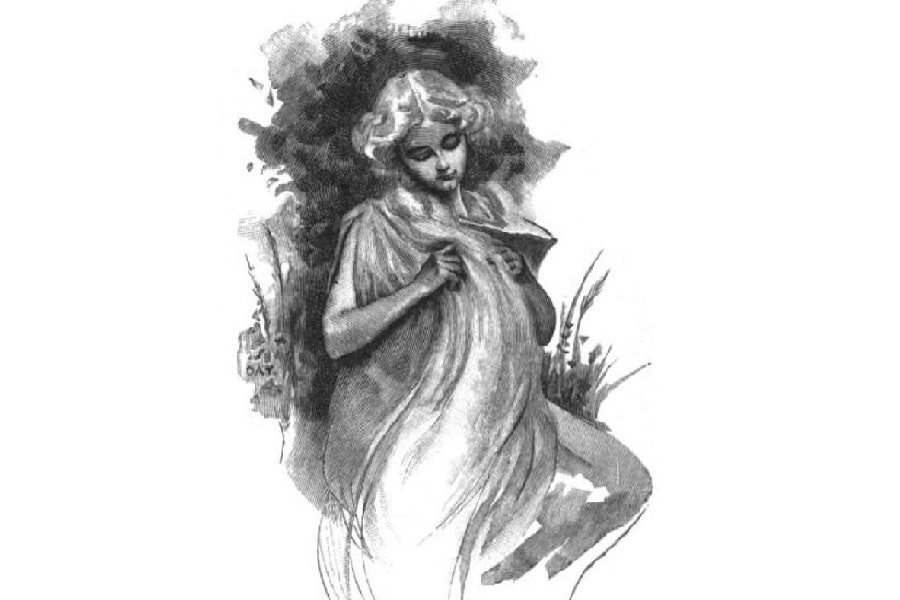
Realms: Domesticity, bountiful harvests, fertility, grain
Family Ties: Wife of Thor, mother of Ullr and Thrud, sister of Heimdall
Fun Fact: Loki once chopped off Sif’s famous golden hair
Sif is a grain goddess that settled down with Thor. She got her hair chopped off by Loki but got a great golden wig afterward so…an even exchange? Thor was pretty mad about it, but everything seemed to work out after Loki petitioned dwarves to create new hair for the goddess out of pure gold strands.
Magni and Modi
Realms: Strength and physical might (Magni); wrath and rage (Modi)
Family Ties: Sons of Thor and the jotunn Jarnsaxa
Fun Fact: These two were among the few beings that could lift Thor’s hammer
Magni and Modi are two of three of Thor’s children, each of whom represented a trait of their fathers. It just so happens that Magni represented his old man’s physical prowess and godly strength. Due to this, the god was one of the few buff bros that could lift legendary Mjolnir. On the flip side of things, Modi represented his father’s rage and could also wield Mjolnir.
Thrud

Realms: Resilience and battle
Family Ties: Daughter of Thor and Sif
Fun Fact: Thrud is also a name of a Valkyrie, who may be the goddess herself
Thrud is the daughter of Thor and yet another embodiment of his most celebrated traits. In the case of Thrud, she represented her father’s resilience. There is also a Valkyrie who shares her name and the two may be one of the same.
It is safe to say that Thrud would be able to wield Mjolnir since her half-brothers could. It’s only fair.
Bragi
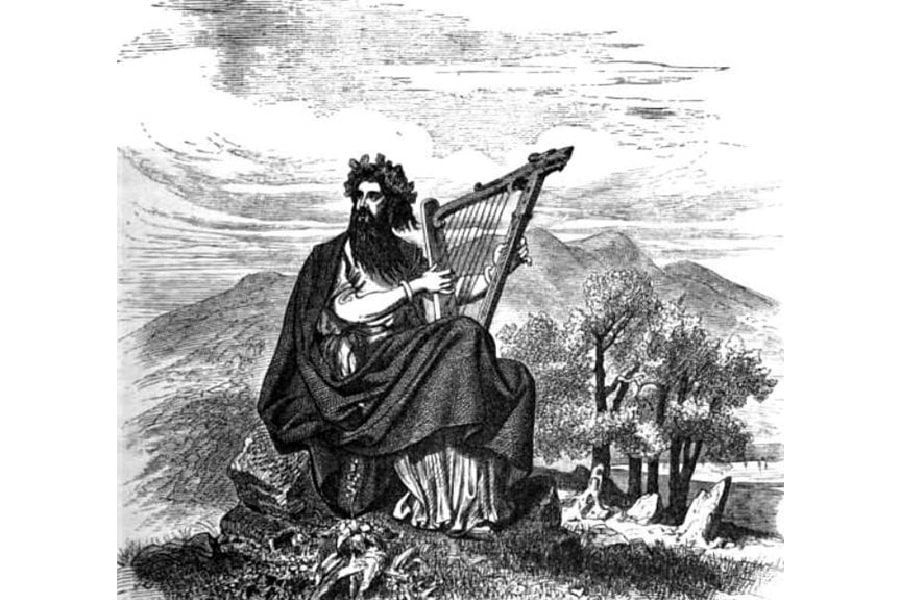
Realms: Eloquence, poetry, performance, music
Family Ties: Husband of Idunn and one of Odin’s sons
Fun Fact: Bragi tells tales of heroic exploits in the halls of Valhalla
Bragi was the bard of the gods. Where the Greeks had Orpheus, the Norse had Bragi. He was born into the Aesir tribe after Odin had an affair with the jotunn Gunnlod.
For a musician that sang of the epic feats of gods and man for a living, Bragi is a mystery. He had some runes on his tongue and – at least by Snorri Sturluson’s standard – was the “first maker of poetry.” Furthermore, like all of the gods in the Lokasenna, Bragi also got a tongue-lashing from Loki: he was only “brave while he’s sitting.”
Idunn
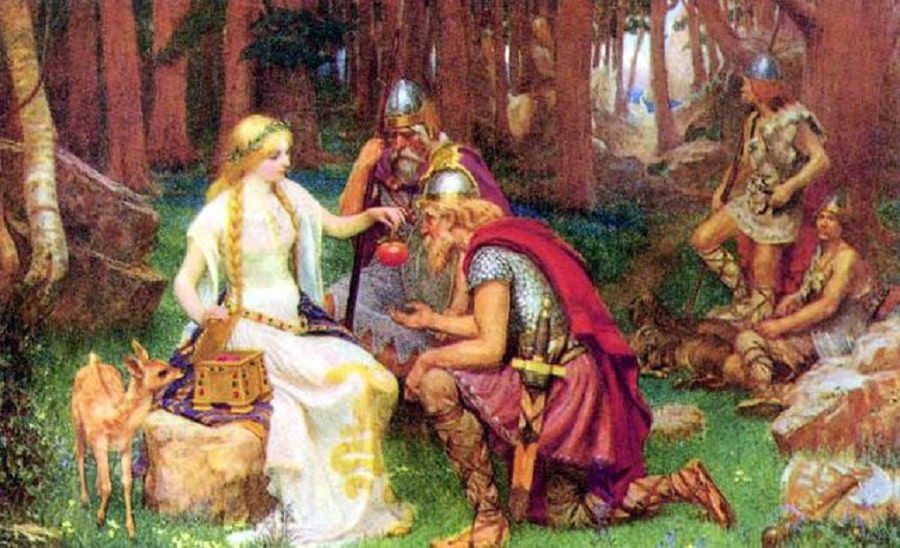
Realms: Spring, rejuvenation, youth
Family Ties: Wife of Bragi
Fun Fact: Idunn was once kidnapped and held hostage in Jotunheim
Idunn was the goddess of Spring and the beloved wife of the Skaldic god, Bragi. She was the keeper of some golden apples that could grant eternal youth to the consumer, which the gods were big fans of. How messy would things get if those apples were…oh, misplaced? Terribly messy, in fact. You could ask Loki.
Without their eternal youthfulness, the gods were aging and risked death. Nothing new for normal folk, but to the Nordic gods this was crazy. Thankfully the apples came back into possession of the gods and all was right again. Well, for a little while at least.
Heimdall
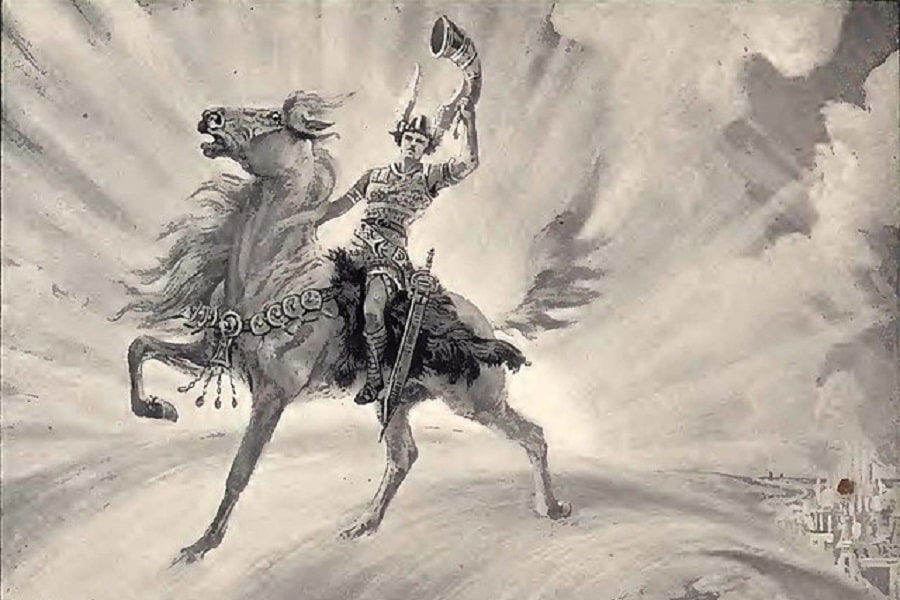
Realms: Sight, vigilance, protection
Family Ties: One of Odin’s sons
Fun Fact: He has golden teeth
Heimdall was the divine guard standing watch over the Bifrost, the rainbow bridge that connects Asgard to Midgard. He has to blow the resounding Gjallarhorn at the start of Ragnarok to warn Asgardians of the incoming onslaught.
Practically born into the role of guardianship, Heimdall’s senses are second to none. Legends say that his hearing is so superior that he could hear the grass grow. Whether or not this is an after-effect of having nine sea giant mothers is up for debate. Now that we’ve mentioned it…maybe that’s also why he has gold teeth.
Hermod
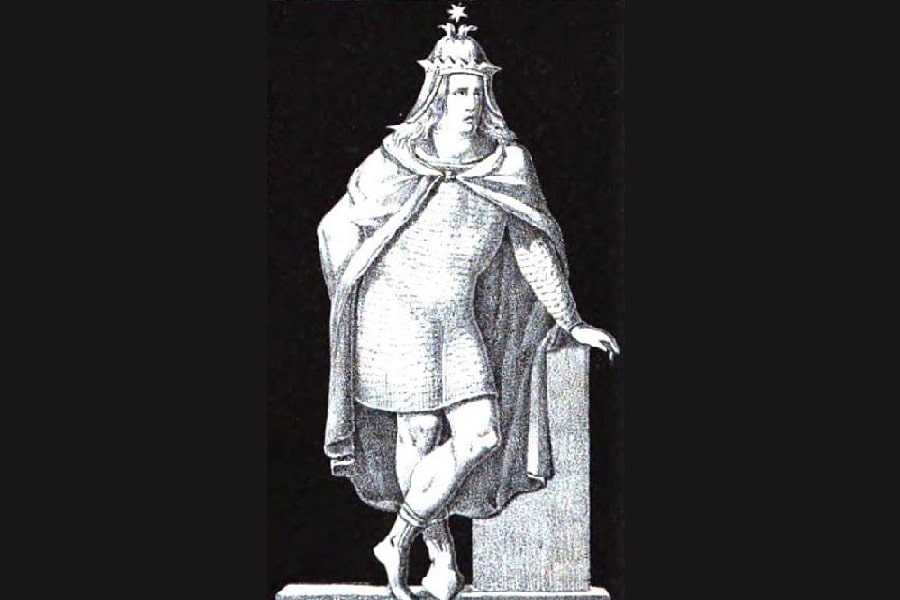
Realms: Communication
Family Ties: Son of Odin, half-brother of Baldr
Fun Fact: Traveled to Helheim on Sleipnir to bargain for Baldr on Frigg’s behalf
Hermod was the Norse god of communication. He was responsible for relaying messages to and from Odin. When Baldr was slain, Hermod was the only one able to pull themselves together in the aftermath. He volunteered as the messenger of the Aesir and gained all of Frigg’s “love and favor” by riding to Helheim.
Hermod was celebrated for his distinguished nobility and whole-hearted attempt to sway Hel, feeble though it was. In skaldic poetry, Hermod may have been a member of the Valhalla welcoming committee.
Hod
Realms: Darkness
Family Ties: Son of Odin and Frigg
Fun Fact: Hod was born completely blind
Hod was the god of darkness and, coincidentally, the only Aesir noted to be blind. He was totally not his parents’ favorite, as that honor went to the faultless Baldr. However, Hod didn’t seem to mind. He was content sticking to the sidelines and being a wallflower.
Mayhap Hod would have gone down in history as unremarkable if the blind god wasn’t led by Loki to kill Baldr with a mistletoe-laced arrow. From that day on, Hod was infamous for mistakenly putting blind faith in the wrong person.
Tyr
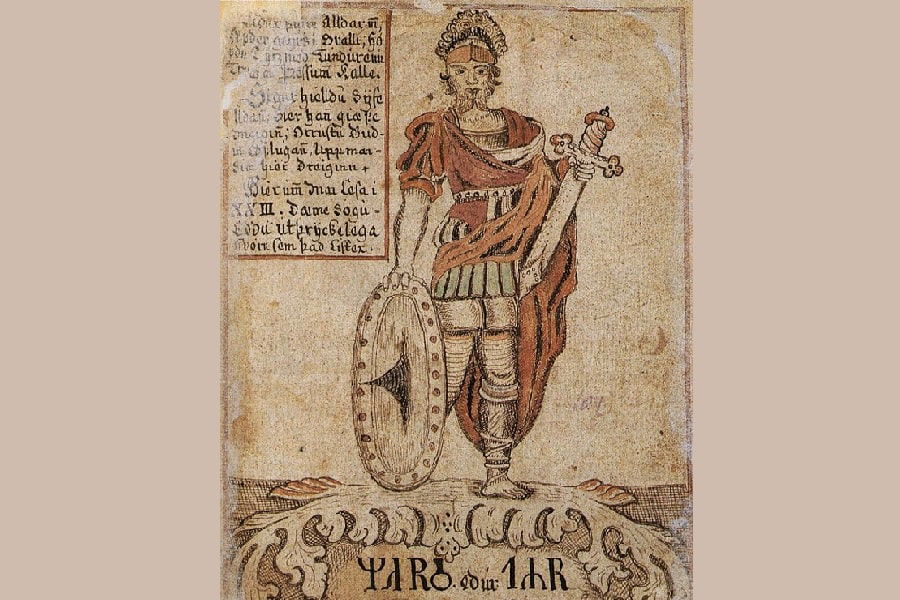
Realms: Warfare, treaties, justice
Family Ties: Son of Odin
Fun Fact: Tyr was admired amongst the Aesir for his bravery and lawfulness
Tyr was a war god and a god of justice in Old Germanic religion. Amongst the whole of the pantheon, Tyr was by far one of the most respected. Although he didn’t have Baldr’s grace, Thor’s might, or Vidar’s passion, Tyr was immensely just. He could talk his way into a treaty without the other guy realizing it.
Vili and Ve
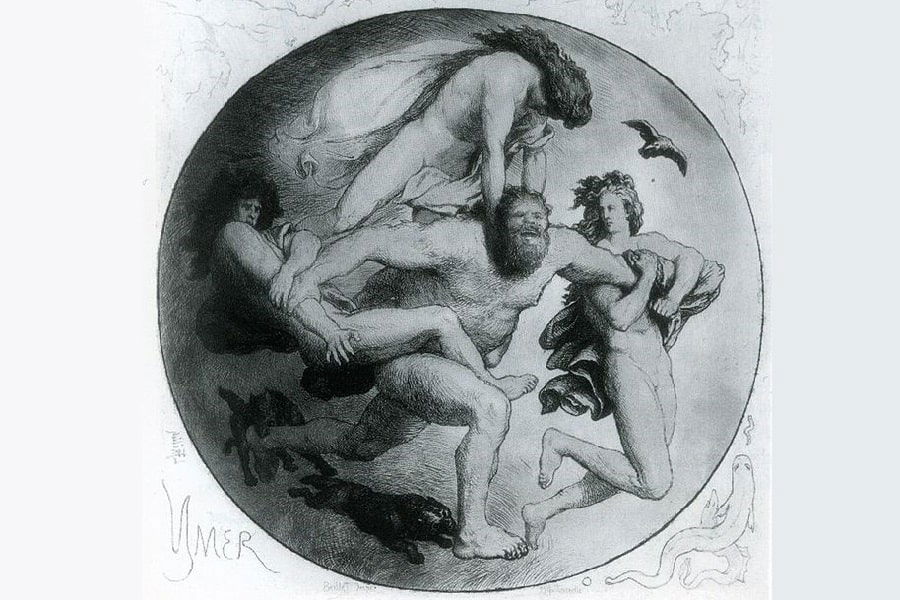
Realms: Wit and the senses (Vili); Countenance and speech (Ve)
Family Ties: Brothers of Odin, sons of Borr and Bestla
Fun Fact: Loki once suggested that Vili and Ve had affairs with Frigg while Odin was absent
Vili and Ve are the younger brothers of Odin. They both were kinda big deals, having helped create the first man and woman of Midgard. As is the case with most younger siblings, they looked up to their big brother frequently.
It is not mentioned whether or not Vili and Ve were as worshiped as the rest of their family. Despite their significant contribution to mankind, Vili and Ve may have been swept under the rug.
Buri
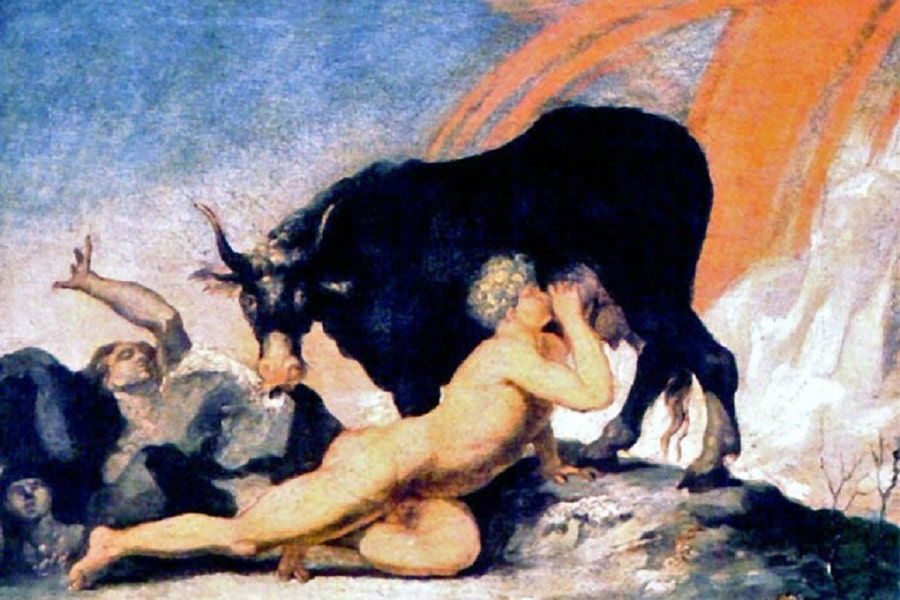
Realms: Generations
Family Ties: Father of Borr, grandfather of Odin, Vili, and Ve
Fun Fact: Is the first Aesir
Buri has a special place in Norse myths as the first of the Aesir. He came to be when the cow that nursed Ymir licked frost from some particularly salty rocks. The shape that this cow, Audumbla, created was the form of a man. That man was Buri.
Besides being the first being that came into existence after the jotunn, Buri isn’t largely worshiped. He is instead most famous for the feats of his descendants.
Borr
Realms: The first mountains
Family Ties: Son of Buri, husband of Bestla, father of Odin, Vili, and Ve
Fun Fact: Borr resides in Asgard with the other Aesir
Borr is the father of none other than Odin “the All-Father.” That is what he is most famous for, after all. By marrying the jotunn Bestla, he helped parent the three famous brothers that would create mankind.
As the son of Buri, Borr was the second generation of the Aesir. According to the Icelandic historian Finnur Magnusson, Borr likely represented the first mountain chain to emerge, with Bestla representing the snow at its peaks. Magnusson asserts that this mountain chain was probably the Caucasus. While not an important god, Borr would have had a geographical function.
Nott
Realms: The Night
Family Ties: Wife of Naglfari, Annar, and Dellingr; mother of Audr, Jord, and Dagr
Fun Fact: Nott has a chariot drawn by a horse named Hrimfaxi, which means “rime mane”
Nott was the goddess of the night. She had married three times and had a single child per marriage. In the Gylfaginning, Nott was noted to be a jotunn woman that ascended to her position after a series of marriages.
Dellingr
Realms: Dawn and sunrise
Family Ties: Third husband of Nott (or Jord) and father of Dagr
Fun Fact: “Delling’s Doors” may be a metaphor for the sunrise
Dellingr is a minor god of the dawn in Norse mythology. His name in Old Norse likely means “the Shining One” or “the Shining Doors.” Now, Dellingr isn’t the most famous of the gods. He is frequently outshined (literally and metaphorically) by his wife and son.
As for the name “Dellingr,” it appears sparsely throughout early literature, but it turns out that Dellingr – and the variation, Delling – were super popular dwarven names as well. Thus, if a source was speaking of Delling the god or Delling the dwarf, it is hard to say.
Dagr

Realms: The day and daylight
Family Ties: Son of Dellingr and Nott (or Jord)
Fun Fact: Dagr is said to resemble his father
Dagr is the god of the day. He rides on a horse, Skinfaxi, to bring daylight to the world. As a god, Dagr is the son of the dawn, Dellingr, and the night, Nott. His mother rides the companion of Skinfaxi, called Hrimfaxi; the steeds were a gift from Odin.
Eir
Realms: Medicine and healing
Family Ties: N/A
Fun Fact: A Valkyrie under Odin and Frigg’s handmaid
Where Eir fits into the Norse god family tree is a question still waiting to be answered. She isn’t anyone’s daughter, aunt, cousin, or sister. Eir is just sort of there, minding everyone’s business and getting stuff done.
You see, Eir is associated with medicine and healing. Her being a god is a bit up in the air, as she was possibly a Valkyrie. Regardless of her position in Asgard though, Eir was a renowned healer. The poem Fjolsvinnsmal of the Poetic Edda attests that Eir accepts blots, or blood sacrifices, in exchange for aid.
Beyla
Realms: Bees, manure, agriculture
Family Ties: Wife of Byggvir
Fun Fact: According to Loki, Beyla was “befouled” by her own “filth”
Beyla is a minor Norse goddess and an attendant of Freyr. She was only mentioned within the Lokasenna, one of the poems of the Poetic Edda collection. The 10th-century poem focuses on a confrontation between Loki and the other gods in the form of flyting. Pretty much, they were all hurling insults in the form of verse.
Scholars generally assume that Beyla has some connection to agriculture from the etymology of her name. Which is pretty unclear: it could mean “bean,” “cow,” or “bee.”
Njord
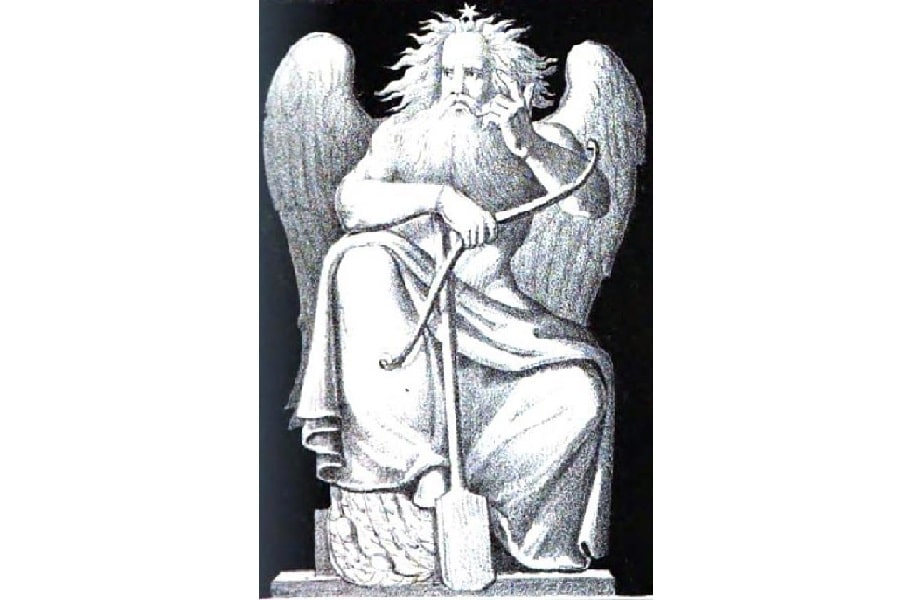
Realms: The Sea, wind, wealth
Family Ties: Father of twins Freyr and Freyja
Fun Fact: Snorri Sturluson suggests Njord be an early Swedish king
By Viking standards, Njord is the god of the sea. To some extent, he also personified the sea. He was the patriarch of the Vanir and preferred seclusion over the conversation. The man just wants to hang out in faraway Noatun with his boats and get postcards from his kids now and again.
Oh, and he was said to have really nice feet. Whatever that means.
READ MORE: Water Gods and Sea Gods From Around the World
Freyja
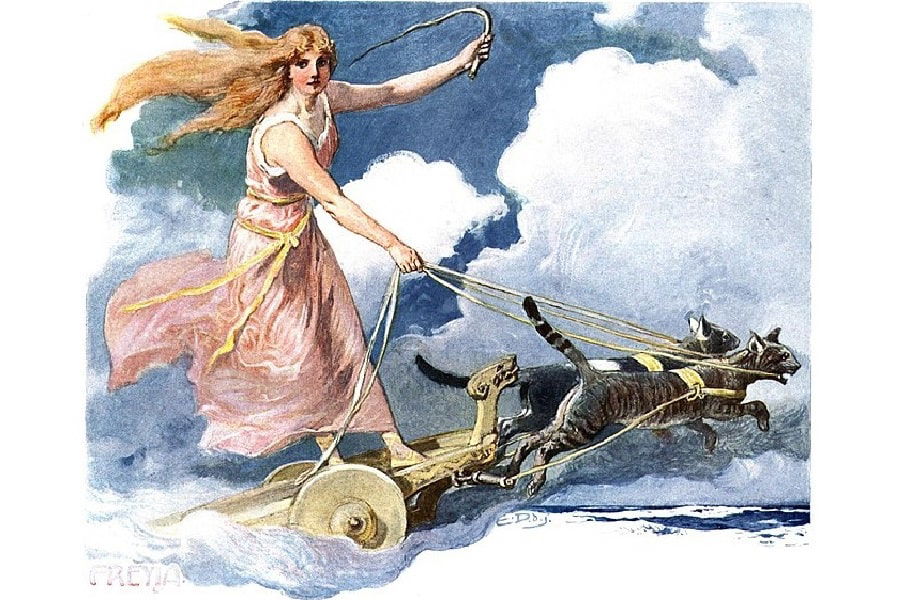
Realms: Love, sex, fertility, battle, seidr
Family Ties: Wife of Odr, twin sister of Freyr, mother of Hnoss and Gersemi
Fun Fact: Freyja has a chariot drawn by two cats
Freyja is the Norse goddess of love. She was also a patroness and practitioner of seidr magics. Seidr was a type of divination magic that focused on telling the future and changing it. She was also the ruler of Folkvangr.
As a goddess of battle, Freyja was in charge of this Norse underworld. It was one of a kind. Folkvangr is described as a bountiful field, exclusive to those warriors that did not make the cut for Valhalla.
Freyr
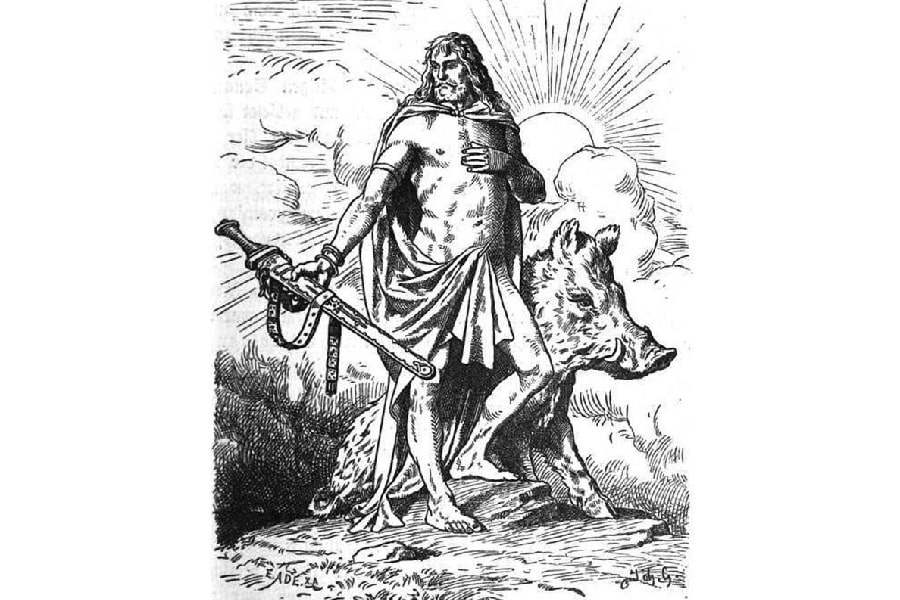
Realms: Sunshine, fertility, peace, the harvest, fair weather
Family Ties: Husband of Gridr, twin brother of Freyja, son of Njord
Fun Fact: Freyr was given Alfheim as a teething present
Freyr, as with many Vanir, was innately in tune with the earth. He also is the owner of a sword that shone like the sun and could move on its own in battle. At least, he owned one, until he gave it to his future father-in-law so he could marry the giantess Gridr.
Ah, the things we do for love!
Alongside his twin sister Freyja and their father, Njord, Freyr became a member of the Aesir after the Aesir-Vanir War.
Gerd
Realms: Fertility
Family Ties: Wife of Freyr, mother of Fjolnir (ancestor of the Swedish Yngling Dynasty)
Fun Fact: Gerd is the most beautiful jotunn
Before Gerd became a goddess, she was first a jotunn. And, as the story goes, she wanted nothing to do with Freyr. She was content to live her quiet life in Jotunheim. Then, Freyr showed her dad a cool sword and the next thing Gerd knew was that she was married to a god.
Hnoss and Gersemi
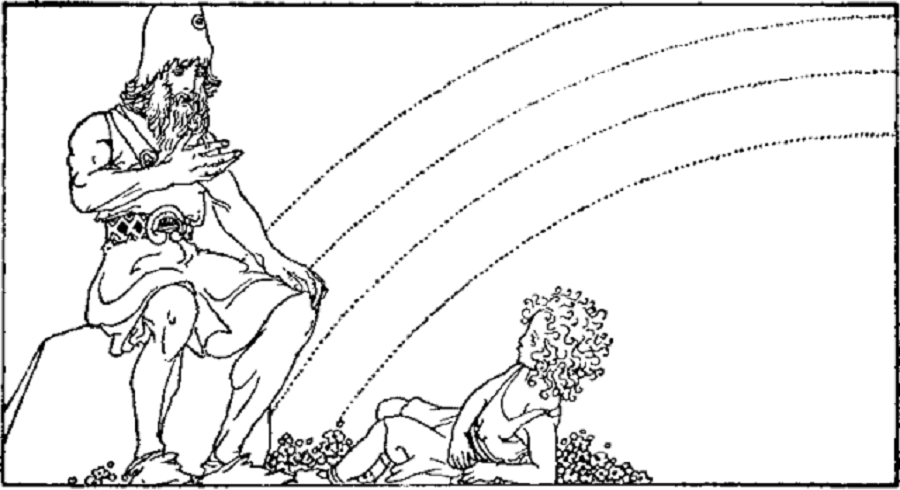
Realms: Lust and desire (Hnoss); beauty and worldly possession (Gersemi)
Family Ties: Daughters of Freyja and Odr
Fun Fact: These sisters are practically interchangeable
Do you think you’re seeing double? That’s because you are.
For beginners, Hnoss is an absolute treasure. Literally. She is the Vanir goddess of desire; her name — along with that of her sister, Gersemi – was used to refer to valuable items.
As the daughter of Freyja, Hnoss would be spoiled with gifts and, per her beauty, lavished with attention. Her sister, Gersemi, is also offered the same treatment. Although not twins, these sisters are nearly identical in function and appearance.
Nerthus

Realms: The Earth, abundance, stability
Family Ties: Possible sister-wife of Njord
Fun Fact: Nerthus is frequently equated with the Phrygian mother goddess Cybele
Nerthus is one of the more enigmatic of the Norse goddesses. She was connected to the earth in some capacity and may have been the unnamed sister-wife of Njord. Or, as another theory suggests, Nerthus could have been an older variation of Njord.
Regardless of who Nerthus was, she was undoubtedly equated with the Roman Terra Mater. Such opens the door for Nerthus to become synonymous with other earthen Mother Goddesses, such as Cybele and Gaia.
Kvasir
Realms: Wisdom, poetry, diplomacy
Family Ties: Born from the mixed spit of the Aesir and Vanir after they made peace (so, everyone?)
Fun Fact: Kvasir was murdered by dwarven brothers who mixed his blood with honey, thus making the fabled Mead of Poetry
Kvasir is a fun god: he traveled the world spreading his wisdom and writing some tasteful poetry. Although not the life of the party like Bragi, he had his moments! After all, for a guy born from the spit of all the Norse gods, Kvasir accomplished a lot.
Even after Kvasir’s untimely death, he remained dedicated to poetry. The Mead of Poetry – made from his blood and some honey – was said to transform the drinker into a skald or a scholar with a single sip.
Fulla

Realms: Secrets and plenty
Family Ties: N/A
Fun Fact: Fulla is the keeper of Frigg’s secrets
Not a whole bunch of information survives regarding Fulla. We know she takes care of Frigg’s personal life, jewelry, and shoes, but little else is addressed. She was also somewhat close with Baldr, enough to get a gift from his wife in Helheim.
Gefjun
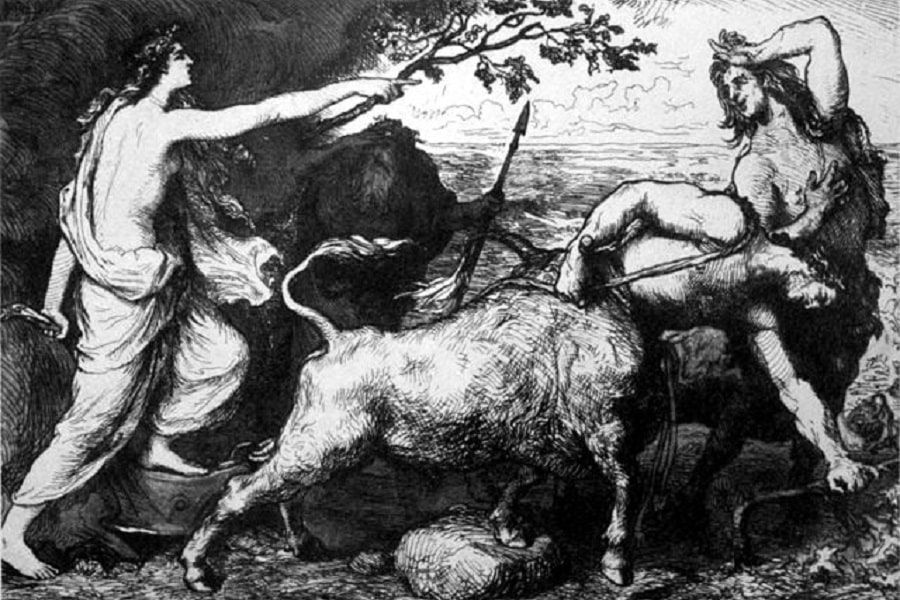
Realms: Agriculture, abundance, plowing, virginity
Family Ties: N/A
Fun Fact: Oxen are sacred to Gefjun
Gefjun is a goddess of agriculture and abundance that appears in the Lokasenna. She is amicable enough, urging both sides to stop arguing since Loki was known to make a mockery of all. When Loki accuses Gefjun of indecency and being swayed into lewd acts by a necklace, Odin had come to her defense.
Odin asserts that Gefjun could see the future as well as he could. Therefore, Loki made the mistake of insulting her. Additionally, since Gefjun is a virginal goddess, those who die virgins become her attendants.
Gna
Realms: Wind, fullness, swiftness, notoriety
Family Ties: N/A
Fun Fact: As a messenger of Frigg, Gna is occasionally shown as being winged
Gna is a goddess of the wind and the supposed goddess of fullness. She runs errands throughout the nine realms on Frigg’s behalf and rides back the horse, Hofvarpnir.
Apparently, Gna can speedily cross vast expanses of water while riding Hofvarpnir, who was able to walk on water and fly. Talk about instant messaging! Eat your heart out, Pony Express.
READ MORE: Who Invented Water? History of the Water Molecule
Hlin
Realms: Consolation and protection
Family Ties: N/A
Fun Fact: Hlin is a popular given name in Sweden
Hlin was the goddess of consolation and may have been an aspect of Frigg. She lives up to her name (which means “protector”) by seeking out those Frigg wishes to save from an ill fate. Hlin is especially popular amongst the ladies, having been invoked in various Old Norse kennings for women.
Loki

Realms: Chaos, trickery, and mischief
Family Ties: Father of Jormungandr, Fenrir, and Hel
Fun Fact: Loki was a notorious shapeshifter
The quintessential trickster god, Loki gets himself in hot water a lot. Like, way more than someone should. Sure, people mess up all the time. When you’re the god of mischief, it just so happens that you mess up a lot more than other people. However, probably not even Loki could have bargained for his cumulative uh-ohs to trigger Ragnarok.
Though depending on the interpretation you’re most familiar with, it may seem like Loki “may chaos reign” Laufeyjarson was absolutely ushering in Ragnarok. Regardless of later interpretations, Loki was not evil. Alignment-wise, he was mostly chaotic-neutral.
Sigyn
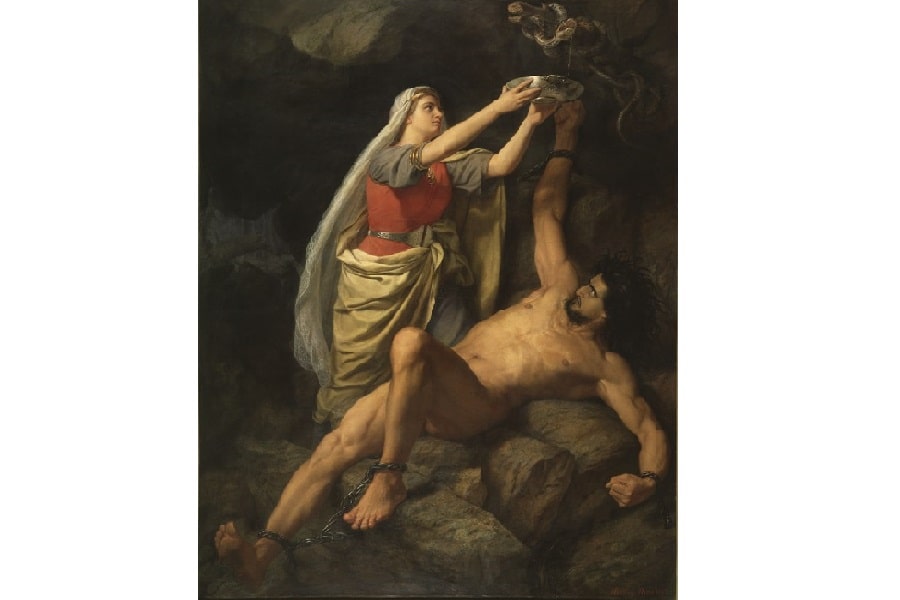
Realms: Freedom and victory
Family Ties: Wife of Loki and mother of Narfi
Fun Fact: Sigyn (inadvertently) contributed to Ragnarok
Sigyn is the unfortunate wife of Loki. Based on implications from her name, she may be a deity associated with freedom. Ironic, since she cared for her husband during his imprisonment.
You see, Sigyn had the worst of luck. Being married to the most despised god was only half of it. They loved each other, but when your spouse causes a cataclysmic doomsday for the gods and gets your child murdered…yeesh. That can put a strain on any relationship.
Hel
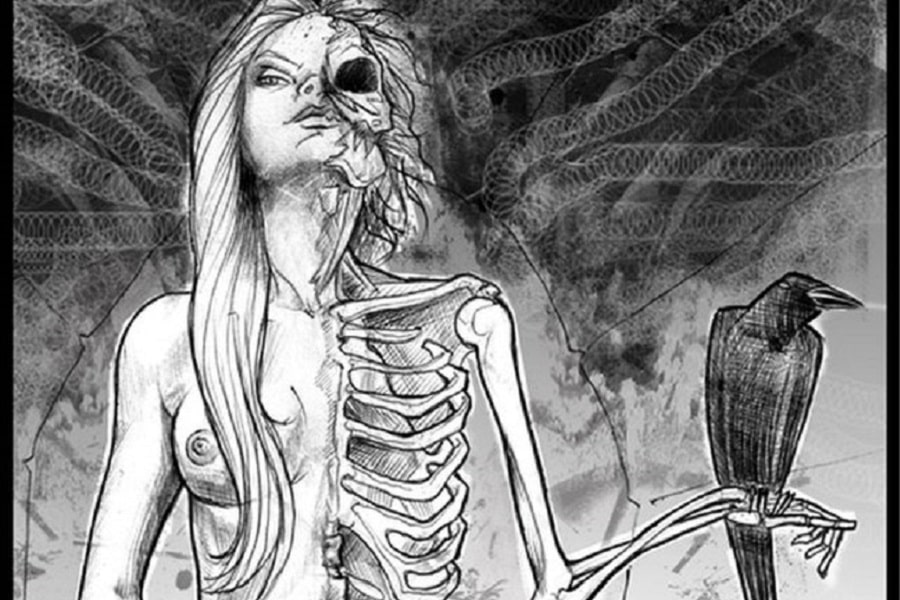
Realms: The dead, Helheim
Family Ties: Daughter of Loki and Angrboda
Fun Fact: Half of Hel’s face is of a beautiful woman, while the other half is blue and skeletal
Hel is the ruler of the Norse underworld, Helheim. Meaning “Home of Hel,” Helheim was an afterlife reserved for those who did not die in battle. It is located within the misty realm of Niflheim.
Befitting an underworld queen, Hel is described as being dour. She takes the role Odin assigned to her very seriously…which is probably why she wasn’t willing to let Baldr leave. Occasionally, though, Hel would leave her abode in Niflheim with the three-legged helhest to scoop up the many that perished from plague or famine.
Although intimidating and fear-inducing, Hel was not the Norse goddess of death. She cared for the dead that did not die in glorious battle. Even Helheim, albeit misty and damp, was not a place of punishment or seclusion.
READ MORE: Gods of Death and the Underworld
Mani and Sol
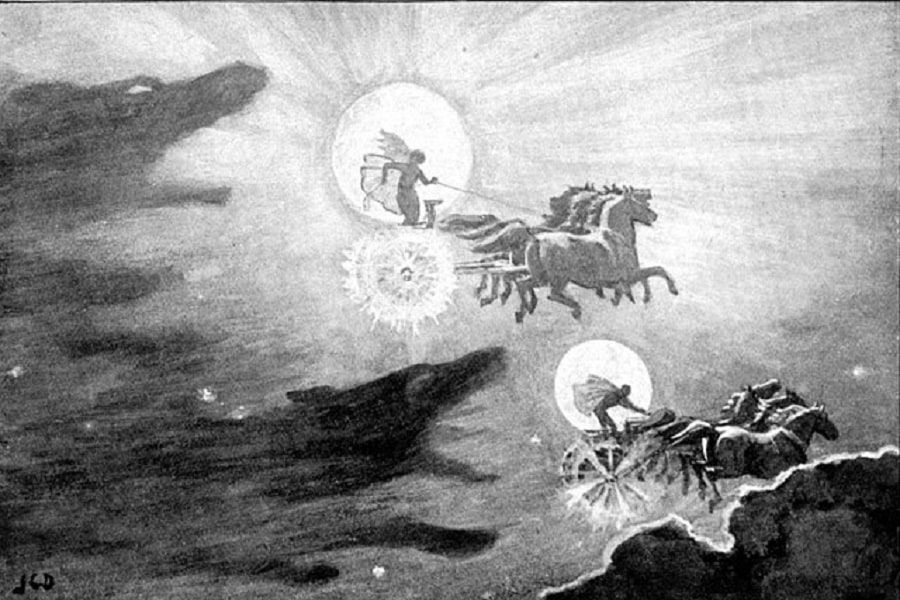
Realms: The moon and the sun
Family Ties: Children of Mundilfari
Fun Fact: Targets of supernatural wolves, Hati and Skoll
Mani and Sol are the two deities that kept the moon and the sun on the path. Their jobs are grueling and perhaps some of the more dangerous of the Norse gods. Also, they probably don’t have any workers’ compensation for whenever Fenrir’s kids decide to snatch them up.
READ MORE: Sun Gods: Ancient Solar Deities From Around the World
Mimir
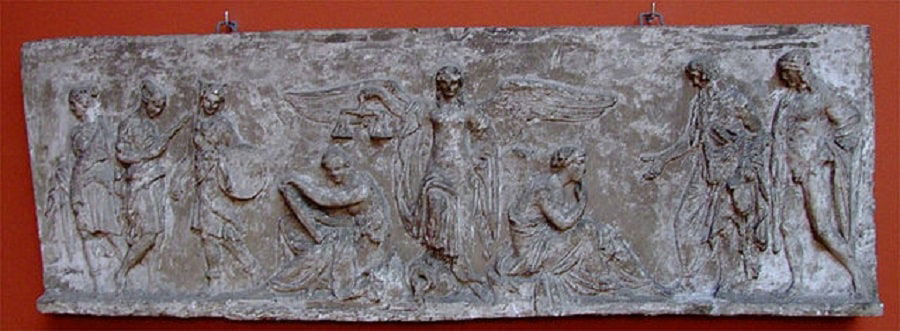
Realms: Wisdom, foresight, and intellect
Family Ties: Son of Honir
Fun Fact: Mimir died in the Aesir-Vanir War, but his head is still around…somewhere
Mimir was among Asgard’s wisest. It is a terrible shame that he died way back during the Aesir-Vanir War. Except…Odin carries his head around as a macabre accessory. You’d think the eye-patch and ravens would be enough of a statement.
According to some legends, Mimir’s head still recites secret knowledge and wise mutterings. That would certainly explain why Odin consults with it now and again. Creepy, but pretty standard for a guy who always pursuing wisdom.
Honir
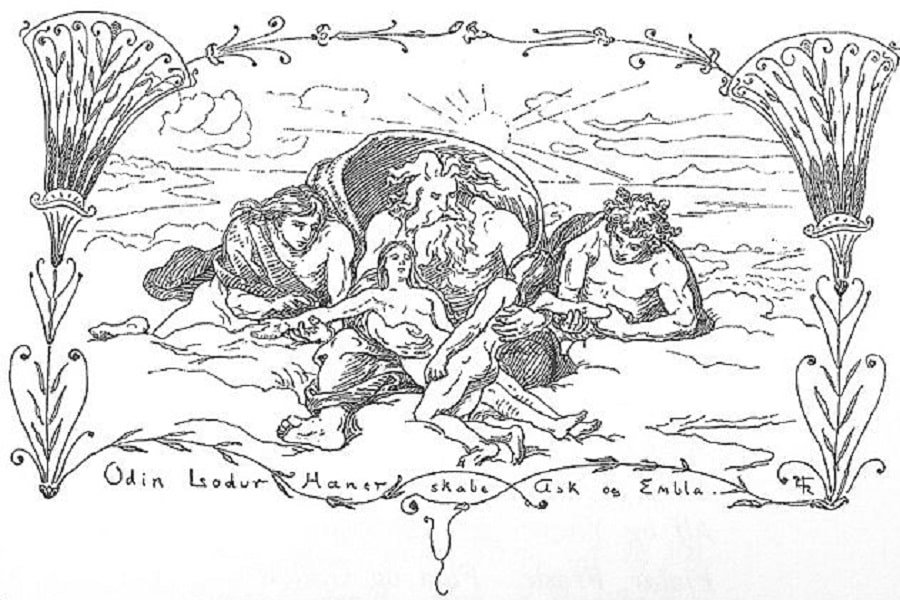
Realms: Indecision, creation, and prophecy
Family Ties: A possible brother of Odin, replacing Vili
Fun Fact: Honir, despite his supposed non-committal nature, survived Ragnarok
Honir crops up in the Voluspa of the Poetic Edda as one of the three beings to first create mankind. He would effectively replace Vili in this iteration, though it is possible for Honir to be an alternative name for Vili.
Honir was thought to be connected to storks and swans. Honestly, he was just really into birds. This was probably because they didn’t mind his indecisiveness.
Lodur
Realms: Creation or fertility*
Family Ties: N/A
Fun Fact: Lodur has been theorized to be an alias for Loki, Vili, Ve, or Freyr
Lodur is an uncommon Norse god and we don’t have any conclusive sources about where he fits in on the family tree. He is scarcely mentioned in most Norse texts, and Snorri Sturluson completely forgoes mention of the god in his Prose Edda.
Some translations note that Lodur gave the first humans, Askr and Embla, good looks as well as movement. However, this would be a role performed by either Odin or one of his brothers. As an enigma, Lodur has been suggested to be an alternate identity for a number of other Norse gods.
*The realms that Lodur encompasses vary depending on whose role he is adopting
Vali
Realms: Vengeance and retribution
Family Ties: Son of Rindr by Odin
Fun Fact: Vali has been argued to be a son of Loki in some interpretations
Vali was a being created out of pure vengeance. We’re not joking. He was conceived specifically to avenge the death of Baldr.
So – Vali hunted down Loki, right? To fulfill the purpose of his birth? Well, no. He didn’t.
Once Vali reached adulthood the day after he was born, he instead murdered the blind god Hod. Talk about a switch-up!
Rindr
Realms: Winter and frost
Family Ties: Mother of Vali (by Odin)
Fun Fact: Rindr may have originally been a Ruthenian princess that became an Aesir after the birth of Vali
Rindr is a goddess of frost. After the death of Baldr, Odin forced himself on her for the sole purpose of bringing Vali (vengeance) into the world. Otherwise, Rindr was speculated to be a mortal princess from Midgard. Her associations with frost, winter and the cold are believed to be because she was a princess of Ruthenia in eastern Europe.
Lofn
Realms: Marriage, forbidden love, star-crossed lovers
Family Ties: Sister of Snotra and Sjofn
Fun Fact: Lofn is a member of the Vanir and the handmaid of Frigg
Lofn – much like her sister, Sjofn – is a romantic goddess. She likes long walks on the beach, pina coladas, and playing matchmaker. Her area of expertise is forbidden romances, which she gladly gives her blessings. Pairing up the most unlikely couples is just her thing.
One could even argue that being the sister of Snotra, there was some wisdom in her decisions. Despite the bumpy road on the way to happily ever after, that is. Hm…could she have known about Romeo and Juliet?
Sjofn
Realms: Love, betrothals, and affection
Family Ties: Sister of Snotra and Lofn
Fun Fact: Sjofn is a celebrated messenger of Freyja
Sjofn: sweet, sweet Sjofn. She is the goddess of love and affection, sharing her realms with several other Norse goddesses. They don’t seem to mind, though. There’s lots of love to go around.
Many Asynjur appears throughout skaldic kennings as a base word for “woman” and Sjofn is no different. Her name is also synonymous with “love.” Aww.
Snotra
Realms: Wisdom and insight
Family Ties: Sister of Lofn and Sjofn
Fun Fact: A particularly wise individual would be referred to as snotr
Snotra’s name comes from the Old Norse word for “clever.” She is reputed to be quick-witted and wise, especially when compared to the love experts that are her sisters.
Despite Snotra’s legendary wisdom, she does not seem to be competing against Odin, the wisest of the gods. Whether or not this has to do with Snotra being a machination of Snorri Sturluson’s imagination is debatable.
Skadi
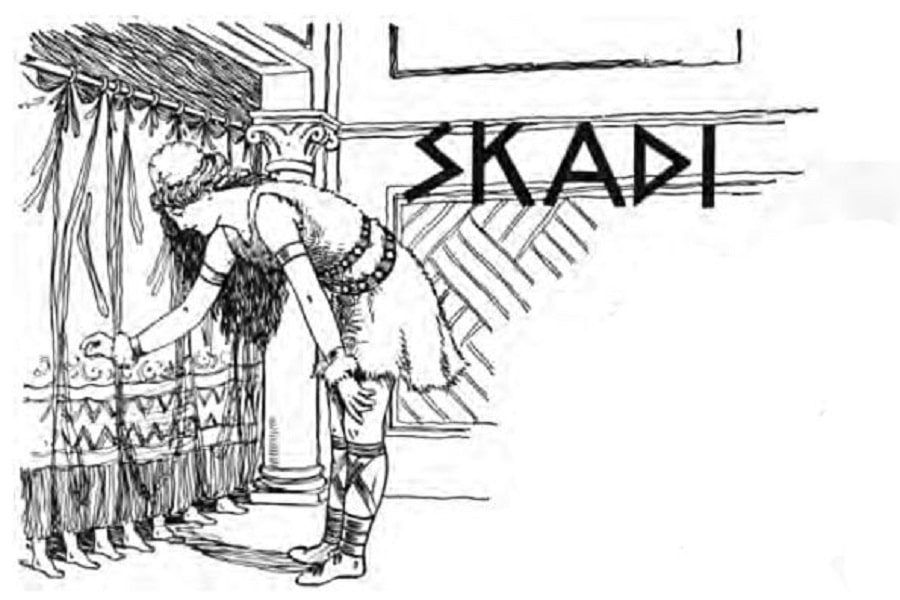
Realms: Hunting, skiing, mountains, archery
Family Ties: Wife of Njord (and possibly Odin?)
Fun Fact: Skadi is oftentimes associated with the Greek goddess Artemis
The giantess Skadi is the goddess of archery, skiing, and mountains. When it came time for her to marry, she went with the “Married at First Sight” route and decided to look at the feet of all of the eligible bachelors. Of course, she couldn’t know what feet belonged to who until after she chose a husband from the bunch.
Skadi happened across the most beautiful feet she had seen and was high-key hoping they belonged to Baldr. Only, they didn’t and she had to get married to someone she had nothing in common with as a result. Sorry, Njord!
Syn
Realms: Defensive refusal and rejection
Family Ties: N/A
Fun Fact: Syn is speculated to be among the Norse disir, female entities related to Fate
Syn is the goddess of refusal. She stands guard at halls and doorways where she waits to shut the doors in the faces of unwelcome guests. In all, Syn is identified with a gatekeeper. One who is particularly choosy about who can and cannot enter.
Ullr
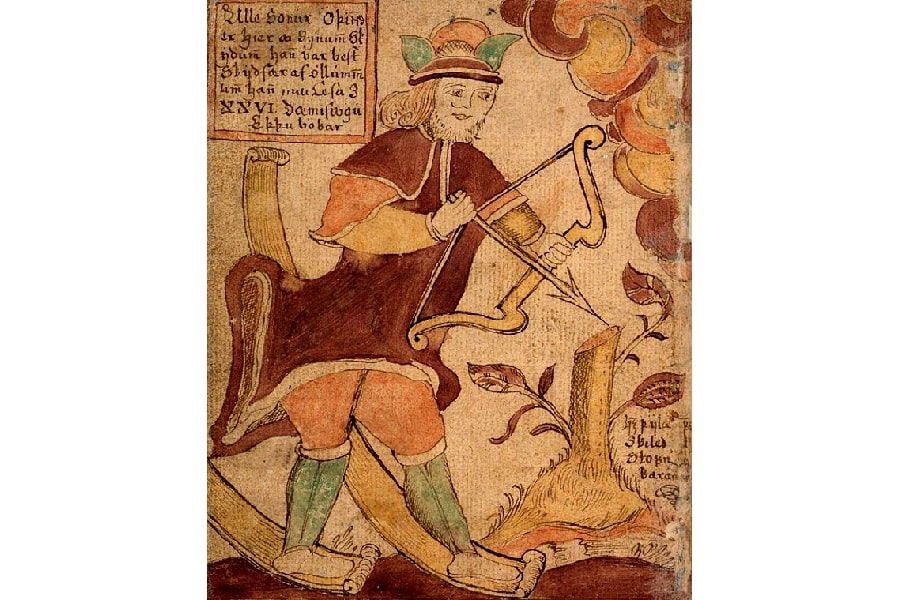
Realms: Snow, winter sports, winter
Family Ties: Son of Sif
Fun Fact: The coat of arms for Ullensaker in Norway depicts Ullr
Ullr is another mystery. He is connected to winter and winter sports, much like the goddess Skadi, but is otherwise a big question mark. Regardless of who Ullr was in the pantheon, he was an incredibly popular figure in Sweden and Norway. The frequency of his name at various locations is a testament to his cult has been widespread.
Var
Realms: Oaths, vows, promises, binding agreements
Family Ties: N/A
Fun Fact: Contracts would be called varar
Var was the goddess of oaths. No pinky swear went unnoticed by her, so you better keep your word. She is holding you to it.
More often than not, Var would be invoked at the beginning or end of any sort of binding agreement. This would include marriages, trade manifests, and private oaths between two individuals.
Vidar

Realms: Vengeance and passion
Family Ties: Son of Odin and Gridr
Fun Fact: Vidar is known as the “Silent God” in the Gylfaginning
Vidar is the definition of “actions speak louder than words.” He gets stuff done that needs to get done. Furthermore, Vidar was the ever-loyal yes-man of Odin. That mischievous god Loki is up to no good again? Just a glance from Odin and Vidar would handle it.
Saga
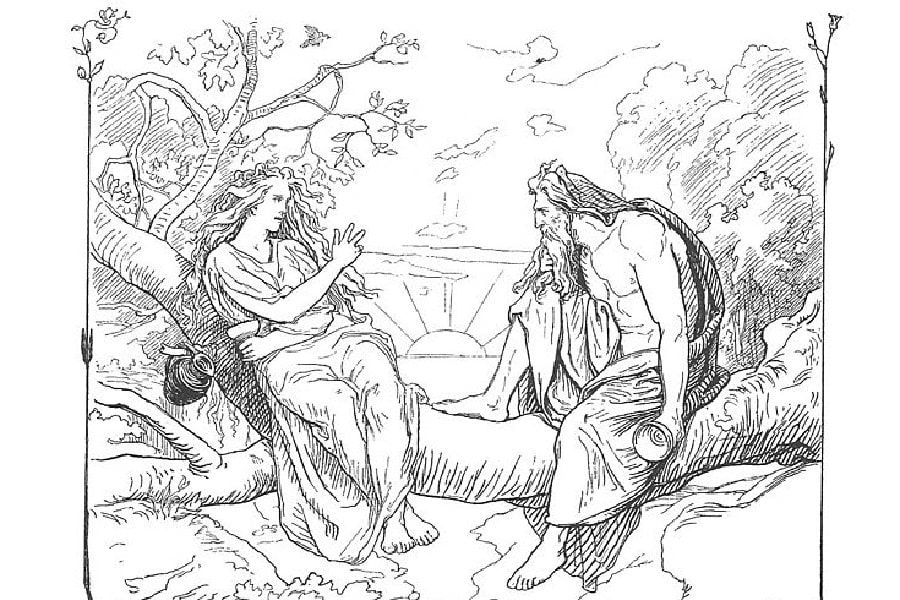
Realms: Prophecy, history, and wisdom
Family Ties: N/A
Fun Fact: Saga was Odin’s drinking buddy
Saga was the goddess of prophecy and history. She cracks open cold ones with Odin down at an embankment to reminisce old times and talk about the future. Thanks to her familiarity with the god, and her skill at prophecy, some scholars think that Saga is actually Frigg.
READ MORE: